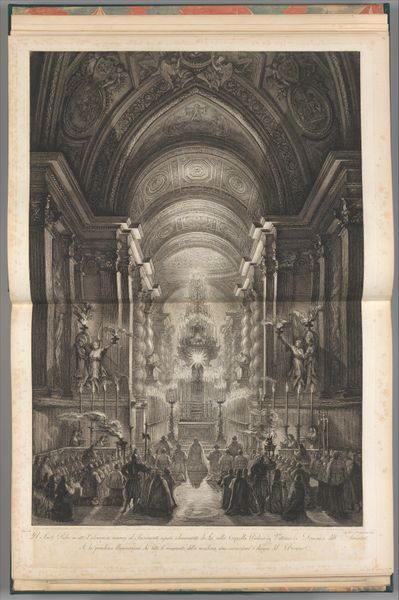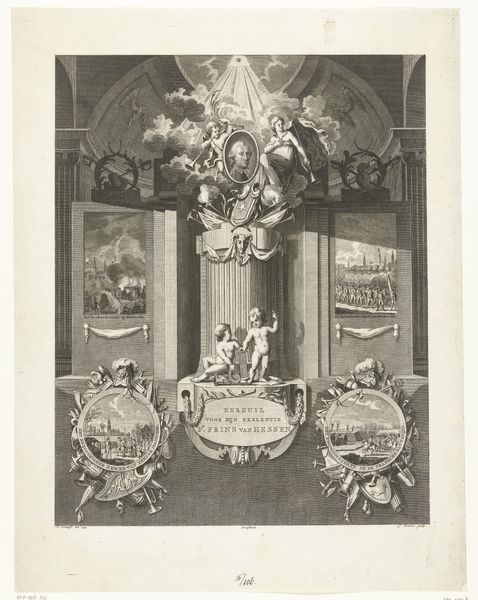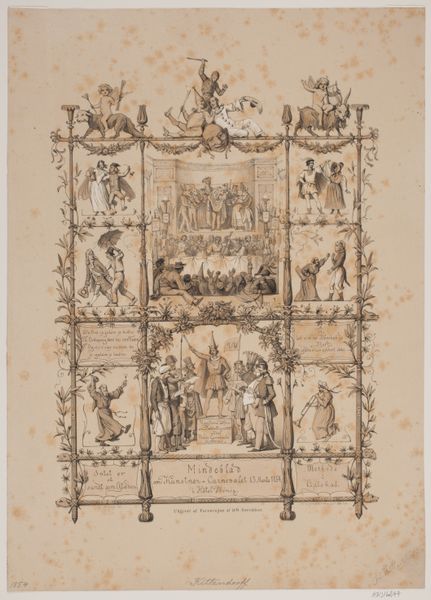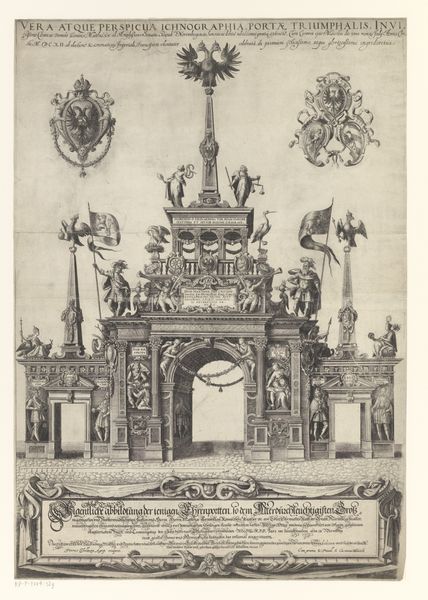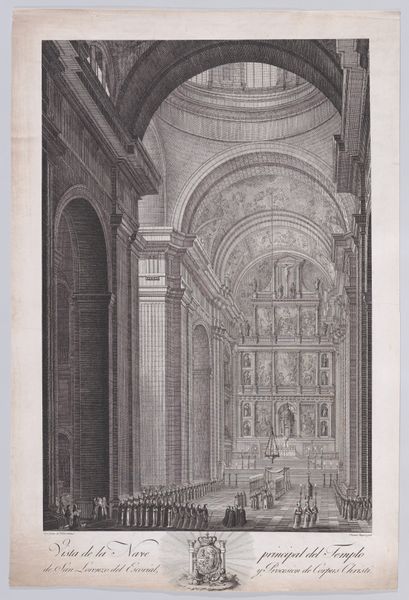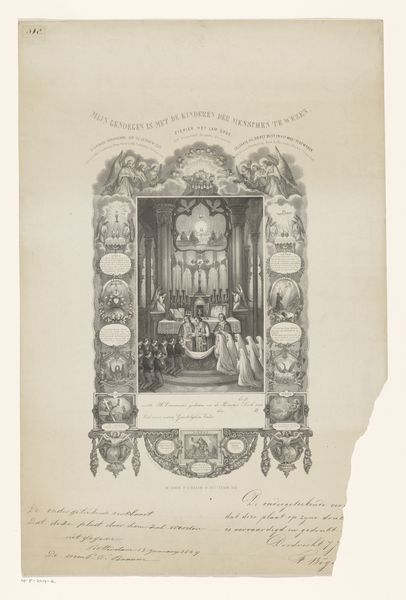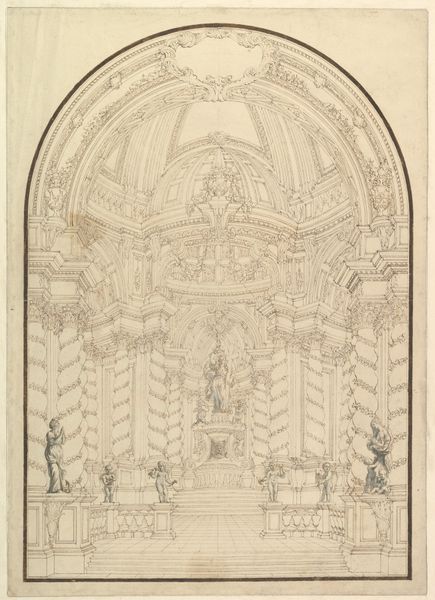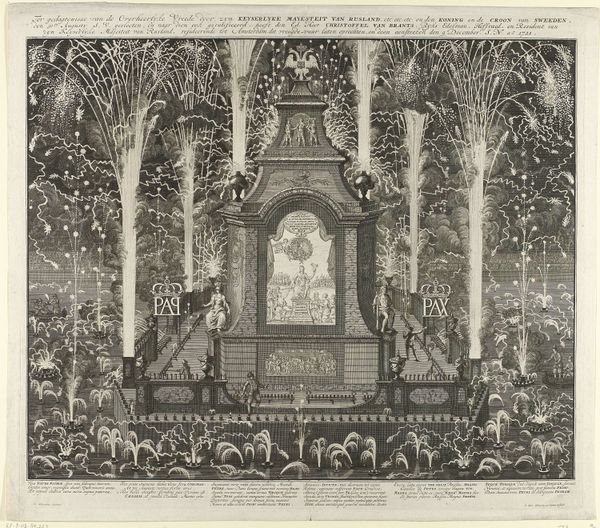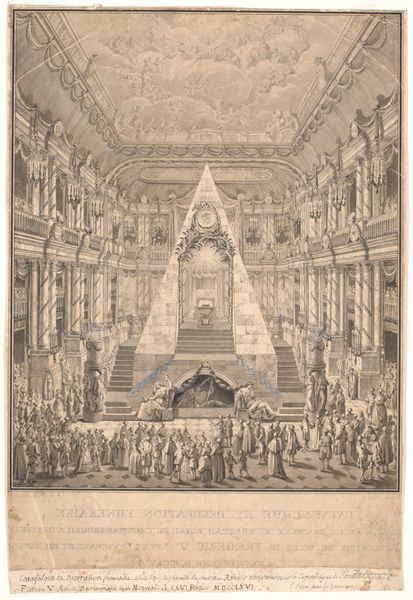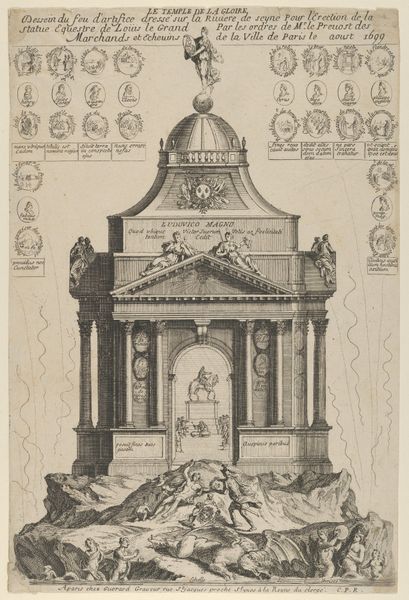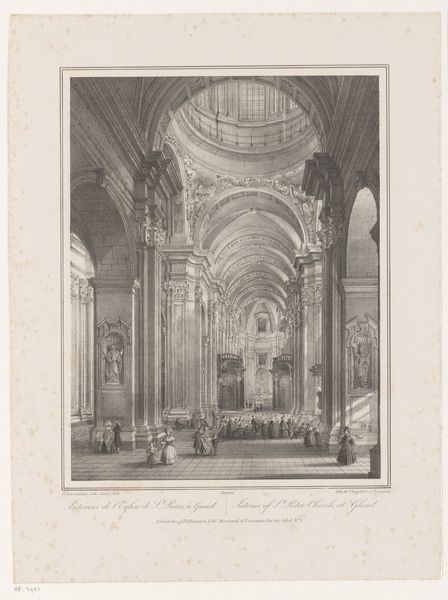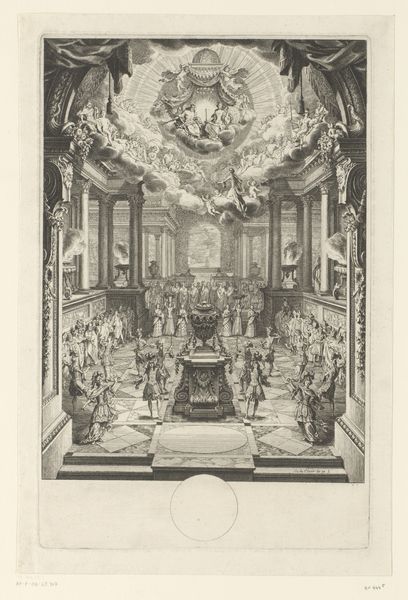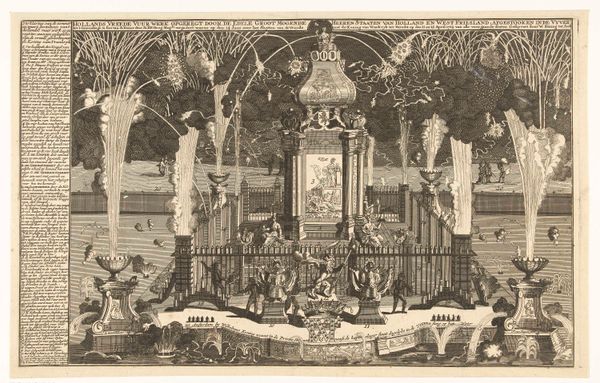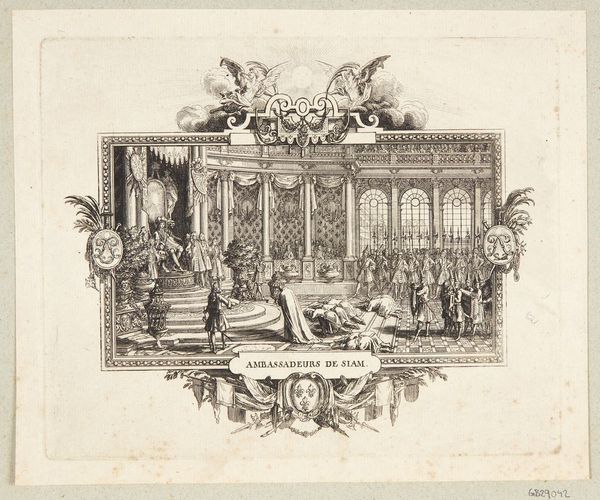
Decoration de la salle de spectacle construite a Versailles pour la representation de la Princesse de Navarre 1740 - 1750
0:00
0:00
drawing, print, engraving
#
drawing
#
baroque
# print
#
perspective
#
line
#
cityscape
#
history-painting
#
engraving
Dimensions: sheet: 33 15/16 x 24 13/16 in. (86.2 x 63 cm) plate: 29 7/16 x 21 1/8 in. (74.8 x 53.6 cm)
Copyright: Public Domain
Editor: Here we have Charles Nicolas Cochin II’s print, "Decoration de la salle de spectacle construite a Versailles pour la representation de la Princesse de Navarre," dating from 1740 to 1750. I'm struck by the sheer ornamentation; it feels like every available space is filled with detail. What stories do you think these visual elements are telling? Curator: An excellent question! This work teems with visual codes designed to impress. Consider the dense crowd: What does their presence, meticulously rendered, communicate about power and spectacle? What kind of values do you think the symbol-laden ornaments were designed to evoke in those who beheld them? Editor: Perhaps order, wealth, and sophisticated taste? I mean, the architecture itself is practically a symbol of royal authority, let alone all the cherubs and garlands... It's almost overwhelming. Curator: Precisely. This carefully constructed scene isn't merely a record; it's a powerful articulation of cultural ideals. Consider also the perspective: all lines converging toward a single, vanishing point – literally directing the viewer’s gaze. Can you infer the intended emotional effect of these specific perspectival devices? Editor: It forces the eye to a certain place, maybe to emphasize whatever performance is staged there. Is that space also symbolic? Curator: Indeed! Think of theater itself – a designated space for orchestrated emotions and narratives – placed under the explicit patronage of royalty, as displayed on the surrounding emblems of power. Consider the role this space might play in shaping a collective consciousness... or enforcing one. Editor: I never considered how deliberate the overall impact was designed to be. The symbolism becomes really powerful when viewed as propaganda! Curator: And how do you feel understanding this engraving's symbolism helps shape your reaction to it today? Editor: I feel much better equipped to see this less as pretty architecture and more as an argument about power. Thanks so much for opening my eyes. Curator: It's in understanding those long-held beliefs and intentions behind images where art really starts to speak to us. I learned something too – it’s wonderful to view these potent symbols anew through your sharp perspective.
Comments
No comments
Be the first to comment and join the conversation on the ultimate creative platform.
